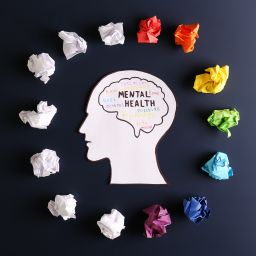Gratitude is the quality of being thankful and a readiness to show appreciation for, and to return, kindness.
Hopefully most people can relate to how good those feelings can be, when we spontaneously realise just how much we have already or what we now have due to the kindness of someone, whether they are a friend or a complete stranger.
In this series of blogs, therapist and mindfulness teacher Tony O’Shea-Poon talks about the physiology of gratitude (what happens in our brains and bodies when we feel gratitude), the benefits of gratitude and how we might express gratitude so that it starts to become our normal state.
Kindness of a stranger
Imagine that you are out walking up a beautiful mountain on a sunny day. You are enjoying the experience so much that you fail to notice the late hour and that the weather has changed. You find yourself on a steep path with low lying clouds all around you. In a single moment, you lose your footing and realise you’re in trouble. You don’t know where you are and you can’t see more than a couple of feet in front of you. It’s getting darker and colder and you can feel the panic coming. This sunny day has turned into a life or death experience!
After some time, you hear a cheerful whistling and, in the distance, a faint light. You call out for help and, within a moment or two, an elderly woman with a beautiful dog arrives and asks you if you need help. You are relieved just to find another person.
The old woman says that you shouldn’t be out here and that you should follow her and her dog to their cabin, which is just a short walk away. You feel even more relieved and immediately have a warm feeling towards her. When you arrive at her cabin, it’s cosy and warm and she serves up a bowl of hot soup. When you look at this stranger across the table, you feel a rush of positive emotions, joy from the relief of worrying about survival, and a sense of close connection to the woman who has given you a wonderful gift – safety and nourishment when you were in trouble – and expecting nothing in return.
Hopefully this story reminds you of a time when you felt gratitude towards the kindness of a stranger. Stories like this were used in a major research study, reported on mindful.org.
This study demonstrated that, when we experience gratitude, the neurons in our brain that light up are those associated with socialising with others and the experience of pleasure. These regions are also associated with the part of the brain that controls our basic emotional regulation, such as heart rate. Feeling grateful and recognising help from others creates a more relaxed body state and thus helps to relieve stress. And the reduction of stress and arousal in the body is known to help reduce pain. From this, we can deduce that cultivating feelings of gratitude can help us to feel more relaxed and better able to deal with emotional and physical pain.
Those regions of the brain are also associated with neural networks that are activated during close interpersonal touch, for example when we receive a hug or someone gives us a massage. As we bond with others, these networks are triggered and make us feel very good. In practical terms, bonding with others supports our health and survival.
A different study showed that practicing gratitude can alter brain function in people who are depressed. Structural changes can take place in the brain, a process known as neuroplasticity – we can literally change and re-wire our brains to be more positive by practicing gratitude.
Gratitude Challenge #2
Can you remember a time when you felt gratitude towards a stranger? Share it with your co-workers, friends and family today.
















